A Cyser is a blend between an apple cider and a mead. Fermenting the fruit and honey combination is also referred to a Melomel but the apple and honey base has earned its own name. Cider is traditionally apple juice and a mead is only honey and water, also known as a Hydromel. This magnificent blend of the two delicious recipes makes a fine drink that is sure to disappear quickly if your patients can handle the aging process.
Apple cyser can be a great drink if you are looking for a higher ABV than traditional cider along with complimentary honey and floral flavors. Because of the higher alcohol content, this cyser recipe will require a few months of aging to mellow the alcohol and bring out the flavor.
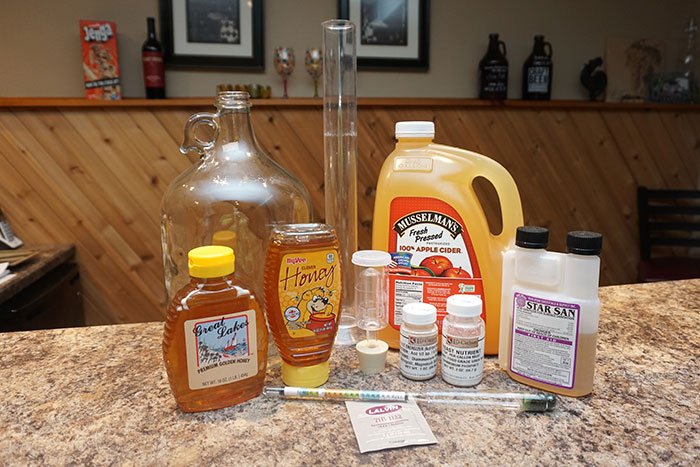
Since a cyser tend to be more like a mead than a cider, it requires a yeast that can tolerate the higher alcohol level. Also, honey lacks many nutrients that yeast need to flourish and since it is a major contributor to the recipe, yeast nutrient and energizer are needed to keep them yeastys strong.
Cyser Mead Recipe Ingredients
Apple Juice:
I chose a commercially available apple juice for this recipe. I decided to stick with commercially produced juices because they tend to be blended and balanced so I know what I am starting with and can reproduce it. Once I find a good recipe, I will then try it with fresh pressed juice.
Honey:
The type of honey used in a cyser is not quite as important as it would be when making straight honey mead, but real honey is a must. The flavor of the apple cider will mask some of the flavor of the honey when the cyser is young but it will come out after ageing. A clover or wildflower honey will work great.
Yeast:
I chose to use wine variety yeast, Lalvin71B-2211, which has an ABV tolerance of 14%. The ABV will be maxed out to the yeast tolerance so any additional sugar will not be fermented resulting in a semi-sweet cyser.
Yeast Nutrient and Energizer:
The yeast nutrient and energizer will improve the health of the yeast which will produce finer tasting alcohol (fewer fusel alcohols ). When making a cider, yeast nutrient or DAP, is typically added in the beginning to increase the amount of dissolved nitrogen in the juice. Because a big portion of this recipe will be from honey that contains nearly no nutrients or nitrogen, we need to feed the yeast more nutrient as they consume the high SG must.
The high sugar content also means that the yeast has a lot more work to do and for a longer period of time. To make sure the yeast does not get stressed, indicated by a sulfur smell and high fusel production, we will add the yeast nutrient and energizer in staggered additions.
This means that the total amounts of nutrient and energizer will be measured out but only half will be added at the time of pitching the yeast, then the other half will be added a day later. Staggering the nutrient additions for cyser will make sure the yeast is fed but not given too much of a good thing at once.
Five Essential Pieces of Equipment





How to Make a Gallon of Cyser:
If you are new to making cider or fermenting in general, start by reviewing the basic cider making guide.
Preparing the Must:
- Place the honey container in hot water to liquefy the honey
- Pour the apple juice (room temp or warmer) and honey into a sanitized fermenter and mix vigorously
- Take a hydrometer reading once the honey has completely dissolved
- Add ½ of the of yeast nutrient and energizer
- Pitch the yeast and attach the airlock
- Wait one day and add the second ½ of yeast nutrient and energizer
Fermentation:
The high gravity of a Cyser will require considerably more time to ferment than a traditional cider recipe. Plan for 6-8 weeks before racking into a secondary but sample SG periodically to get a true gauge of fermentation. A time frame is less important than a quality fermentation.
Finishing the Cyser:
Due to the higher alcohol content of a cyser it will need to be aged for several months to mellow out the alcohol or you may notice the flavor of alcohol overpowers the fruit and honey. Similar to mead and wine, a cyser will develop finer flavors with time.
To age the cyser, rack it into a one gallon sanitized vessel for bulk aging to mellow the alcohol flavor and allow the sediment can drop out. Make sure there is very little headspace in the secondary vessel and the airlock is always full. Excessive oxygen exposure at this point can ruin the flavor of the cyser.
If the cyser remains hazy after several months of bulk aging, a fining agent such as Super-Kleer can be added or it can be filtered using a wine filter.
Once the cyser clears and you are happy with the sedimentation, choose your preferred method of bottling for long-term storage. It is suggested to age cyser for a minimum of 6 months to mellow the strong 14% alcohol flavor and bring out the honey apple notes.
Apple Cyser Mead Recipe
Materials
- 1 gal Apple Cider
- 2 lbs Honey
- 1 tsp Yeast Nutrient
- 1/2 tsp Yeast Energizer
- 1/4 pack Lalvin 71B Yeast
Instructions
- Clean and sanitize all cider making equipment before starting.
- Place the honey container in warm water to make it flow easier.
- Pour the apple juice (warm helps) and honey into the fermenting vessel and mix.
- Take a hydrometer reading to measure the original gravity and record.
- Add 1/2 of yeast nutrient and energizer.
- Pour the yeast into the fermenter.
- Close the fermenter and install an airlock filled with sanitizer.
- After 1 day, add second 1/2 of yeast nutrient and energizer.
- Allow the cyser to ferment in a cool and dark place for about 6-8 weeks.
- Cold crash, rack and bottle.
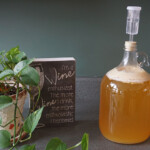
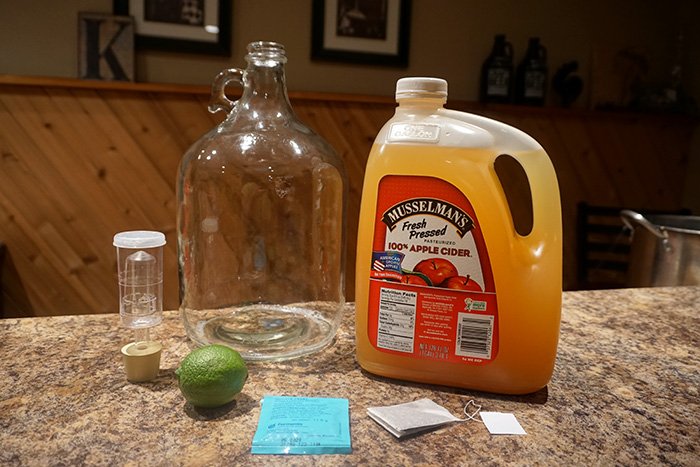
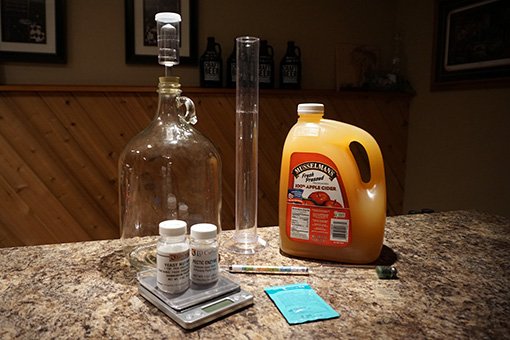
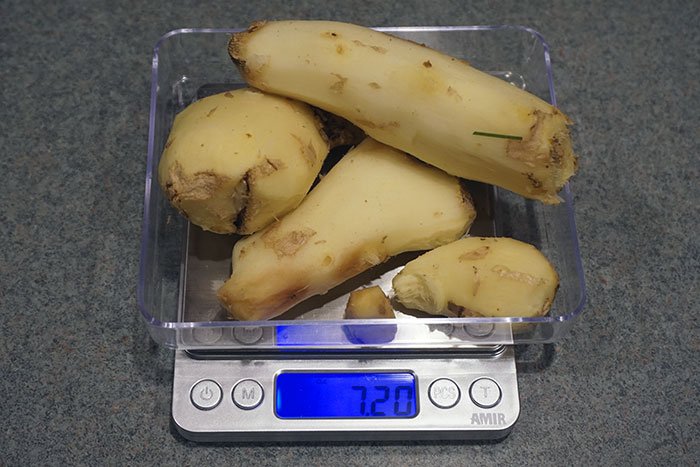
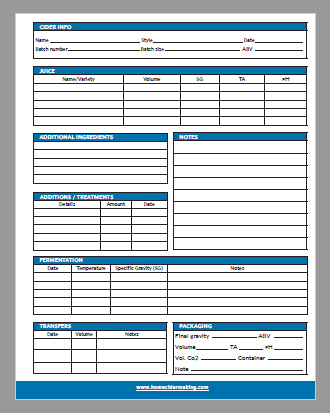
Your links for yeast nutrient and yeast energizer both direct to the yeast nutrient page. Can you provide a link to the yeast energizer page?
I apologize for having the wrong link in there, it is fixed now.
I am confused about the aging steps? You state 6-8weeks to ferment. Then several months of bulk aging in the secondary then 6 months of aging in bottles. Is that correct? I’m supposing the secondary is only necessary to remove sediment and ensure clarity before bottling? Lastly, because the yeast has maxed out isn’t oxygen and oxidation a concern in the secondary fermenter since no CO2 will be produced? Thanks
I like to bulk age in a secondary to clarify but you could go straight to bottles if you don’t mind a fair bit of yeast on the bottom of each bottle. When the cyser gets racked into the secondary, it is important to minimize the amount of headspace in the fermenter so you limit oxygen exposure. In this recipe, I used a one gallon carboy for the primary and secondary. As you can imagine, when I racked the cyser over to the secondary there was not enough to fill the fermenter. So, I added a little more apple juice to bring up the level to the neck of the carboy. Of course, this sparked up fermentation momentarily but didn’t last long. Doing this leaves the fermenter full with limited liquid surface area exposed and leaves a small amount of CO2 in the top.
Overall, I like to age a cyser or mead at least 6 months from the end of fermentation to bring out the flavors. The first batch I made tasted harsh right from the fermenter so I bottled it and forgot about it thinking it was a bad batch. 5 months later, I opened one up and it tasted much, much better; hard to compare really. And, it will only get better with time.
We are making a jug of mead and one of cyzer . Why is the mead bubbling away and the cyzer is barely doing a burp every 8 minutes. Are we doing something wrong?
Will one gallon of apple cider and two pounds of honey all fit in a one gallon jug
Hi Robert,
My one gallon jugs hold a fair bit more than a gallon when filled to the neck but headspace is definitely needed for this type of ferment so a one gallon jug will not fit it all.
For this recipe, I generalize with one gallon of cider because it is the most common unit for purchasing in my area.
I suggest adding the honey to the fermenter and then top it up with the cider to a reasonable level. Of course, you will need to calculate your estimated SG so you know what to expect depending on your juice’s sugar level.
Because this will be a very active fermentation, you will need some headspace or you will be blowing foam out of the airlock so keep that in mind too.
Another way to prepare the must would be to blend it in a larger container until you reach your desired SG, then pour off one gallon into your fermenter. This method will allow you to achieve the right SG without having to mix or dilute in your gallon jug.
Hope this helps and I will edit this post to clarify.
Thanks!
No. I put the honey in, then top off with the cider. Didn’t quite use the whole bottle. Kids were happy about that.
Mine stopped fermenting at about 2 weeks. I racked to secondary at three weeks. Topped off with cider, but it doesn’t look like I got any more fermentation out of it.
It is possible that the yeast consumed all of the sugar already and hit its ABV limit.
Did you take any SG readings?
How much yeast did you add?
Nutrients?
If you used a whole pack of yeast for a one-gallon batch (typically enough for 5-6 gallons) and gave them the nutrients, its possible that they are finished. Overpitching yeast will speed up fermentation but can harm flavor.
This is great information. I know it’s about six months since the last comment. Right now at Thanksgiving, there are many fresh ciders to choose from. I’ve made two 5 gallon batches of mead so I hope using a fresh cider won’t cause a problem for me. I will be using a gallon carboy and wonder if I can get away with using fresh cider and a champagne yeast. Any other suggestions would be appreciated. Thanks so much and I hope you have a wonderful holiday season.
I use Carlo Rossi 4 liter jugs, so getting all the ingredients in one jug is not a problem. I used Lalvin 1118 yeast, so my cyser was dry and 16.6%. ABV. Pretty good stuff!
hi there, you state that you add apple juice to make the cider, but the picture contains a bottle of cider. here in the UK cider is alcoholic, so are you adding non fermented apple juice or alcoholic cider to your must?
In the US “apple cider” refers to apple juice, typically of the unfiltered variety. The alcoholic variety is “hard cider” or simply “cider”. As you might deduce from “Fresh Pressed”, the Musselman’s pictured is not yet fermented.